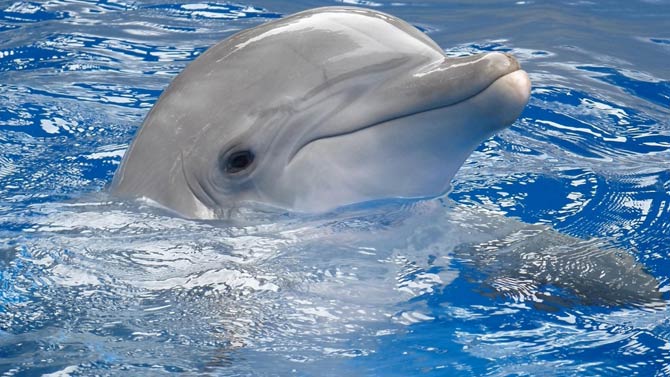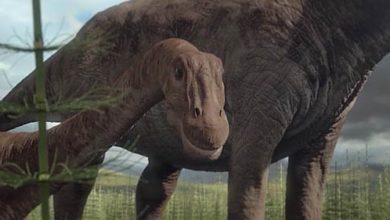Dolphins
Dolphins are mammals perfectly adapted to life in water, found in the seas and oceans of the entire globe, as well as in several big rivers of the equatorial zone. Even though their ancestors hailed from land, they completely severed their ties to the mainland. The elongated, perfectly hydrodynamic shape of the body with a small number of appendages make these animals excellent swimmers. Only the forelimbs remained from their land ancestors, transformed into fins on the chest. Dolphins mainly eat fish and octopuses. Dolphins are the most diverse and, with around 40 species, the largest family of whales (Cetacea). They are widespread in all seas, some species also occur in rivers.
Classification
Dolphins are divided into oceanic and rare and endangered freshwater dolphins.
- Kingdom: Animalia
- Phylum: Chordata
- Class: Mammalia
- Order: Artiodactyla
- Infraorder: Cetacea
- Parvorder: Odontoceti
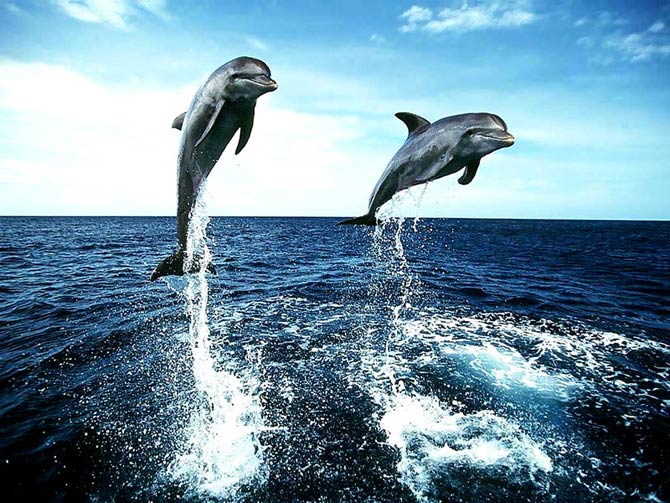
Occurrence
Ocean dolphins are found in all seas and oceans, although they prefer warmer waters. One of their favorite places, like whales and killer whales, are the Canary Islands.
If you ever go to these areas, apart from the obligatory trip to the Loro Park in Puerto de la Cruz and (which we recommend especially) taking a submarine on the coast of Tenerife, be sure to go on a boat trip to meet the whales. Whales do not always appear, but dolphins always accompany such trips. Their jumps, smiles and calls are an unforgettable experience and, of course, a feast for amateur photographers.
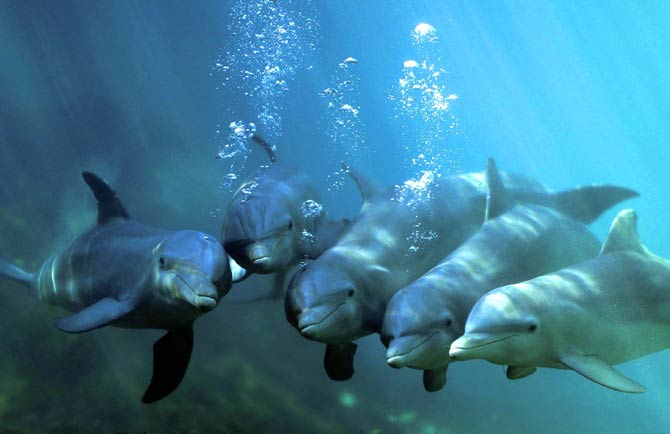
Characteristics
Size
Dolphins range in size from the 170 cm (5 ft 7 in) long and 50 kg (110 lb) Maui’s dolphin to the 10 m (32.8 ft) and 10 ton killer whale.
They have a streamlined body that is adapted to the high swimming speeds. There is a round organ in the head, the melon. It plays a role in echolocation . In many species, the jaws are clearly separated and form an elongated beak. The snout can contain many teeth in several types.
The body color is usually composed of black to white, whereby the underside is usually lighter and the back is clearly distinguished by a darker color.
Dolphins are fast swimmers, reaching speeds of up to 60 km/h. They often jump out of the water, sometimes performing acrobatic figures (e.g. the spinner dolphin ). Such leaps are interpreted as gaming behavior and communication. In addition, the jumps also allow the dolphins to move around more efficiently. Jumps may also help in the search for feeding places, since dolphins can use it to orientate themselves around seagull collections. When hunting they can dive up to 300 meters deep and 15 minutes; however, most diving trains last a few minutes. Dolphins are known to approach ships to ride the waves.
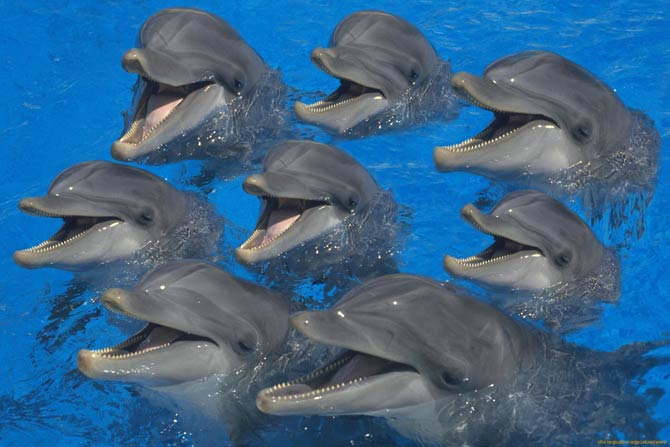
Communication and echolocation
Dolphins can communicate with each other thanks to the sounds they make. These sounds vary in frequency, depending on the type of information being conveyed. Underwater obstacles and food are located using the ability of echolocation, which is rare in the animal world. Dolphins send short sound signals which, bouncing off an object, return as an echo. From them they read the position and movements of a given object.
The latest research shows that dolphins also use sounds as… hunting weapons. The squeaking noises made by these aquatic mammals can stun fish. The low sound also confuses the shoals or scares away larger fish buried in the sand, which of course makes it easier for the dolphin to hunt.

Life in a herd
Dolphins usually live in small herds, usually 20 individuals. However, there are also species that gather in large herds of sometimes thousands of individuals. When the herd wanders, the animals swim just below the surface and often jump out to gain speed as they dive.
Masters of acrobatics
Dolphins are very intelligent and gentle animals, which is why they are popular “actors” of the world’s oceanariums. They are masters of acrobatics and often jump a few meters above the surface of the water, performing spectacular body turns and other stunts. No wonder, that their shows invariably attract crowds of fans.

Diet
Dolphins are fast predators that actively hunt their prey. They find their prey by echolocation and have a specialized organ for this, the melon . In general, dolphins have uniform tapered teeth that are used only to hold the prey in place. The caught fish or squids are almost always eaten in one piece. The teeth are adapted to the respective prey: species with a large number of teeth feed mainly on fish, while species with fewer teeth mostly hunt squids. Some dolphins sometimes catch crustaceans. The killer whale feeds from other marine mammals such as seals or other species of whales and dolphins.
Threats
Unfortunately, dolphins are sometimes caught for meat and fat. They are also threatened by fishing nets, motorboats and environmental pollution.

Dolphins – interesting facts
- Dolphins also jump into the air to see where the sea birds are gathering. This is a clue for them where the shoals of fish are.
- The maximum immersion time for a dolphin is approximately 15 minutes.
- The dolphin sleeps, floating in the water at a depth of about 50 cm, with one eye open. He breathes, surfacing every 30 seconds without waking up.
- A dolphin’s brain is the most developed brain of all mammals. Its structure also proves a high level of mental development.
- The dolphin gives the impression that he is constantly smiling because the corners of his mouth are always open.
- Some species of dolphins can reach speeds of up to 60 km/h.
- Until recently, the US Navy trained dolphins for military tasks. For example, in 1987, dolphins detected submarines in the Persian Gulf.
- Dolphins live up to 21 years.
